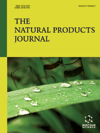
Full text loading...
We use cookies to track usage and preferences.I Understand

Quzhiqiao is a Chinese herbal medicine widely used in Zhejiang Province of China, which originates from the cultivar Citrus aurantiun ‘Changshanhuyou’, named Changshanhuyou in Chinese. Citrus aurantiun ‘Changshanhuyou’ is a botanical variety of C. aurantium L., which is obtained after long-term domestication. It belongs to the Rutaceae family and mainly grows in Changshan County, Zhejiang Province, China. Quzhiqiao is an authentic Chinese medicinal material in the Zhejiang area with various pharmacological and curative effects. A comprehensive review and in-depth analysis of scientific literature on Quzhiqiao was conducted, utilizing diverse electronic databases and additional sources. This review provides a comprehensive overview of its chemical components, standardized quality control, pharmacological activity, and mechanism of action, which also outlines future perspectives, highlighting the necessity for further research for harnessing the potential of the therapeutic use of Quzhiqiao.

Article metrics loading...

Full text loading...
References


Data & Media loading...